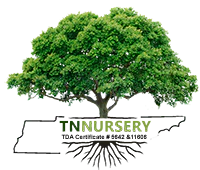Filters
Fruiting Plant Favorites
Looking for quality plants that bear fruit? Look on further than TN Nursery. We offer the best selection of fruit trees, berry plants, and some rare and exotic like persimmon and pawpaw trees. Our offering of plants is fields grown right here in the nursery capital of Middle Tennessee.
Favorites
Apple trees, for example, offer delicious fruits in 3-4 seasons after you plant them. Our plants have already been chilled and are ready to plant in your lawn, landscaping or orchard. Our selection of fruit trees and berry plants is extensive, and we have suppliers that grow these trees, and they are of premium quality. We ship them to your door, to all states nationwide.
Are you a fan of wildlife? Plant fruit plants then! They attract deer, turkeys, squirrels, and lots of other types of wildlife. Plus, they are pollinator plants and attract a host of birds and other types of feathered beauties like bees, hummingbirds, and butterflies.
Garden Plants Nursery Has Everything You Need For Your Garden
TN Nursery is your one-stop shop for quality plants, trees, shrubs, perennials, and seedlings, plus a host of other types of native plants, shrubs, and trees for all your landscaping needs. We offer a 1-year warranty on all our stock and guarantee you will be happy with your purchase for years to come.
















